What The Tech?! The Digital Camera
The transition from film to digital helped transform how we consume media.
For those of us that are of the older persuasion, if we were to say “60 minute processing” or mention the brand Kodak it would probably elicit some interesting memories. While if you’re younger, the brand Kodak might not mean anything at all. In today’s What the Tech?! we’ll be exploring the technology that supercharged imagery, putting a camera in everyone’s pocket and giving us the technology that allowed for the birth of social media.
It involves flying film canisters, a reference to a nuclear disaster and the death of an industrial titan that dominated the post war years in the west, proving that no business is too big to fail. It’s also a great example of what happens when you ignore technology!
The Beginnings:
While photography has a fascinating history in it’s own right, looking at it’s historical development is probably outside the scope of a single article. So for today’s article we’ll be looking at the importance of film cameras and how the transition to digital imagery worked. Let’s Go!
Despite various articles like glass plates and metal filament being heavily used in the early development of photography, the flexible film roll entered the picture relatively early all things considered.
Designed in 1888 by George Eastman, one of the founders of Kodak Eastman, the film roll was made out of cellulose and was designed to bring photography to the masses. And while it showed immediate potential, it took over a decade to achieve mass adoption, with it taking off during the early 1900’s.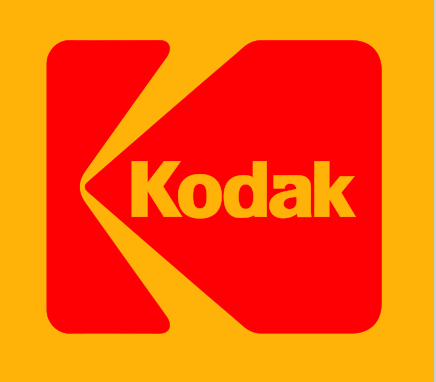 While early film was black and white, by the interwar period of the 1930’s Kodachrome brought color to the masses. This allowed for new revolutions in information processing, social interactions and media consumption. Previous to this, portrait style images were all the rage due to challenges with light, and particularly long exposure time. This early film was rudimentary and poor quality however it was an essential stepping stone to the digital sensor, which we’ll talk about soon.
While early film was black and white, by the interwar period of the 1930’s Kodachrome brought color to the masses. This allowed for new revolutions in information processing, social interactions and media consumption. Previous to this, portrait style images were all the rage due to challenges with light, and particularly long exposure time. This early film was rudimentary and poor quality however it was an essential stepping stone to the digital sensor, which we’ll talk about soon.
The Post War Consumer Boom
Like many innovations that reached mainstream adoption it took military adoption and specialized programs to boost the development of the technology into a reliable way that would allow for the adoption of consumer. And while it usually takes war, or the threat of war to occur before this technology leap can occur, in today’s article the push to give that leap comes from something much more wholesome. It’s also something we’ve looked at before. The Space Race.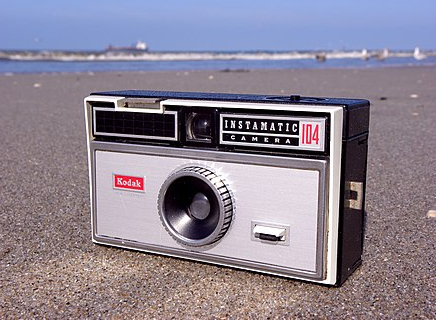
With the launch of Sputnik and the beginnings of the Space Race, the potential for remote access to earth orbiting satellites was unlocked. By the 1960’s this understanding had grown and military analysts, cartographers and surveillance specialists understood the potential advantages this could bring providing it was leveraged properly.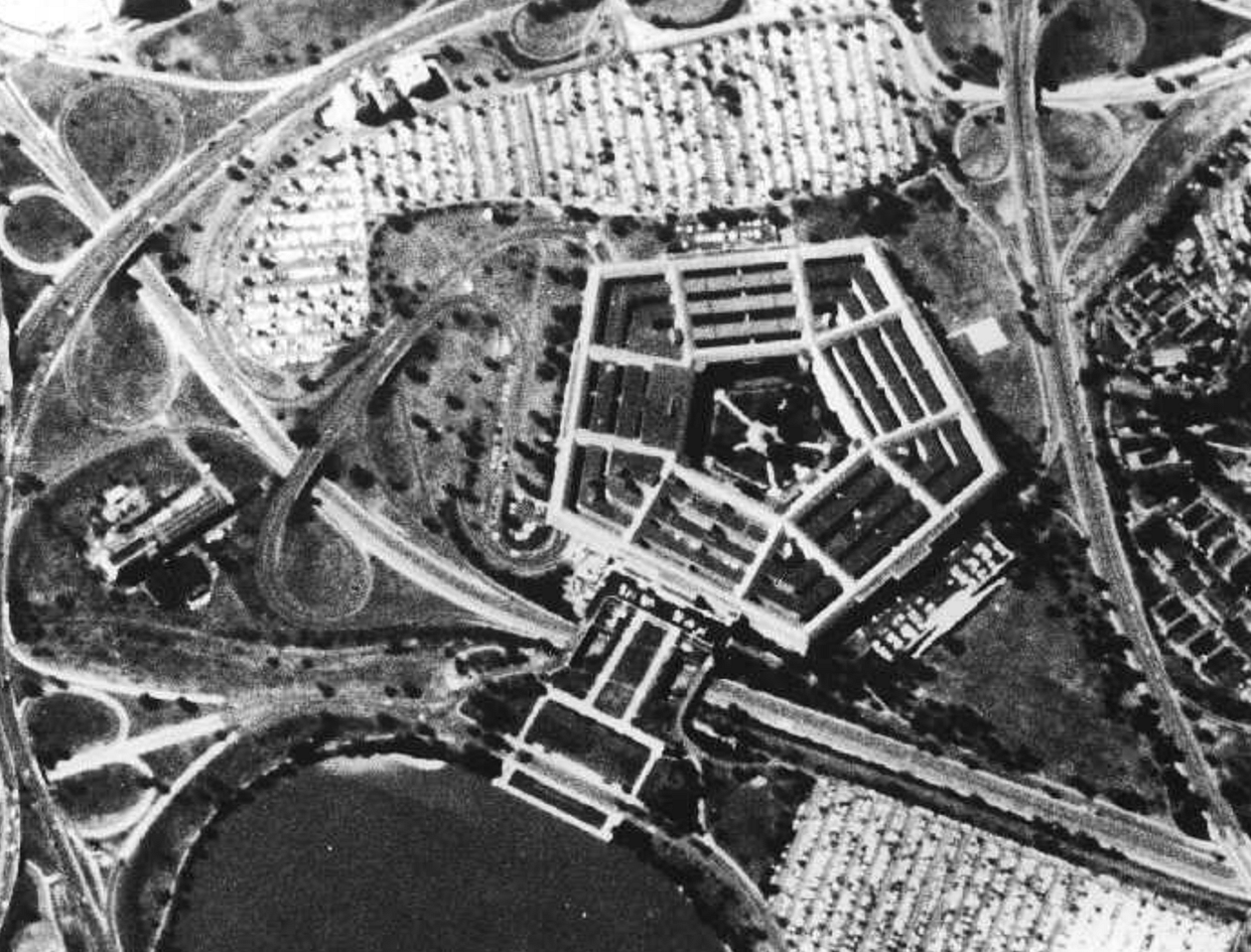 Early Corona Image of the White House. Source: Wikipedia.
Early Corona Image of the White House. Source: Wikipedia.
While early satellites were rudimentary, with little more than a beacon transmitter the next satellites were packed with all kinds of technology. This included Thermal imagery, ELINT Communications Suites, High Speed data links and Synthetic Aperture Radars. This allowed for incredibly detailed images that were able to be used for non military purposes, providing tangible benefits to civilian mapping and research.
However there was also a surveillance side to this. In the 50’s and 60’s the USA launched their “Keyhole” satellite program. Also known as Corona, these satellites provided precision imaging equipment in orbit, providing the USA with advanced, real time imagery capabilities and bringing on the birth of satellite surveillance.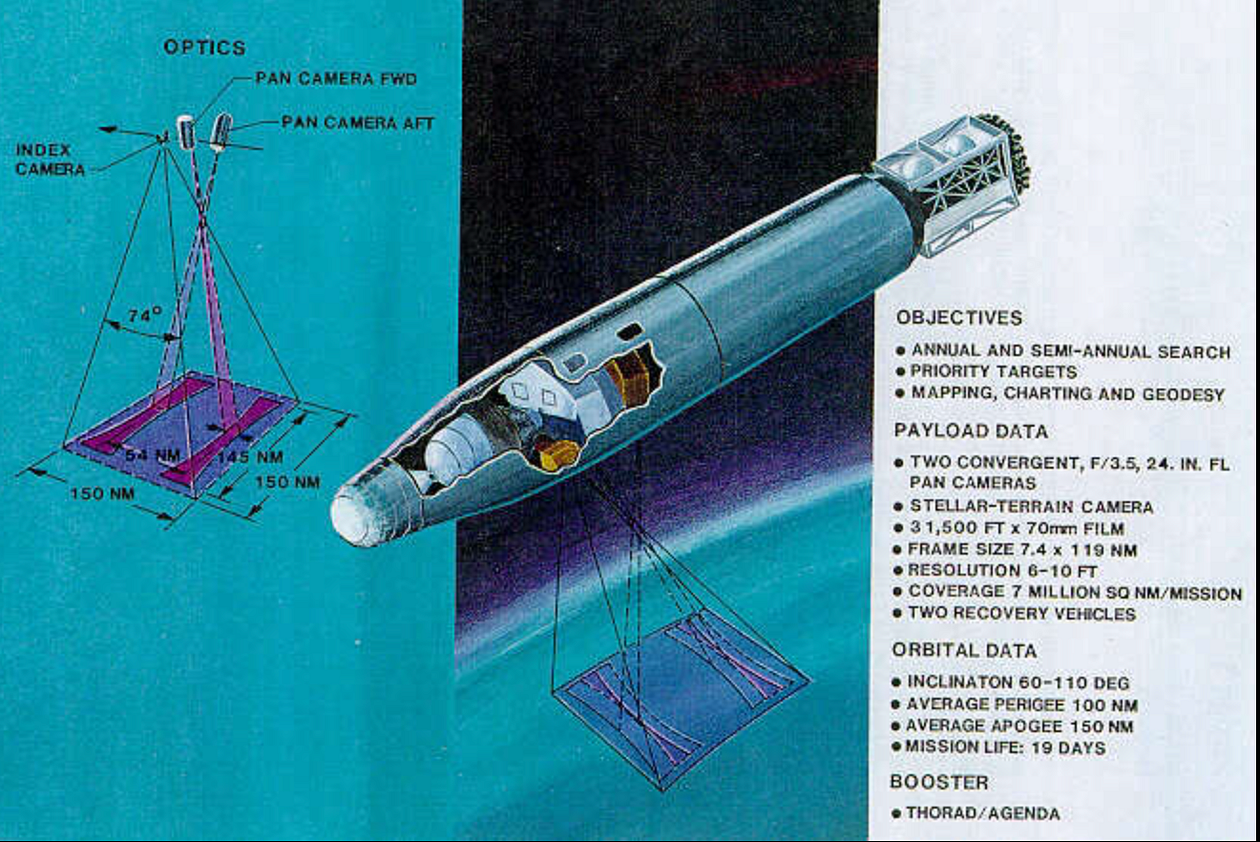
Now you might be wondering how a satellite in orbit can run on film when the camera is up there and the lab is down here, and it’s at this point we come across the first intriguing component of our article.
Early Corona satellites were pro loaded with over 31,000 feet of 70mm film to process images from the two on board cameras, one panoramic and one zoom. Once the film canister was full, the command would be given to eject the canister, where it would be caught by aircraft and sent to Langley for processing. The 50’s was a wild time.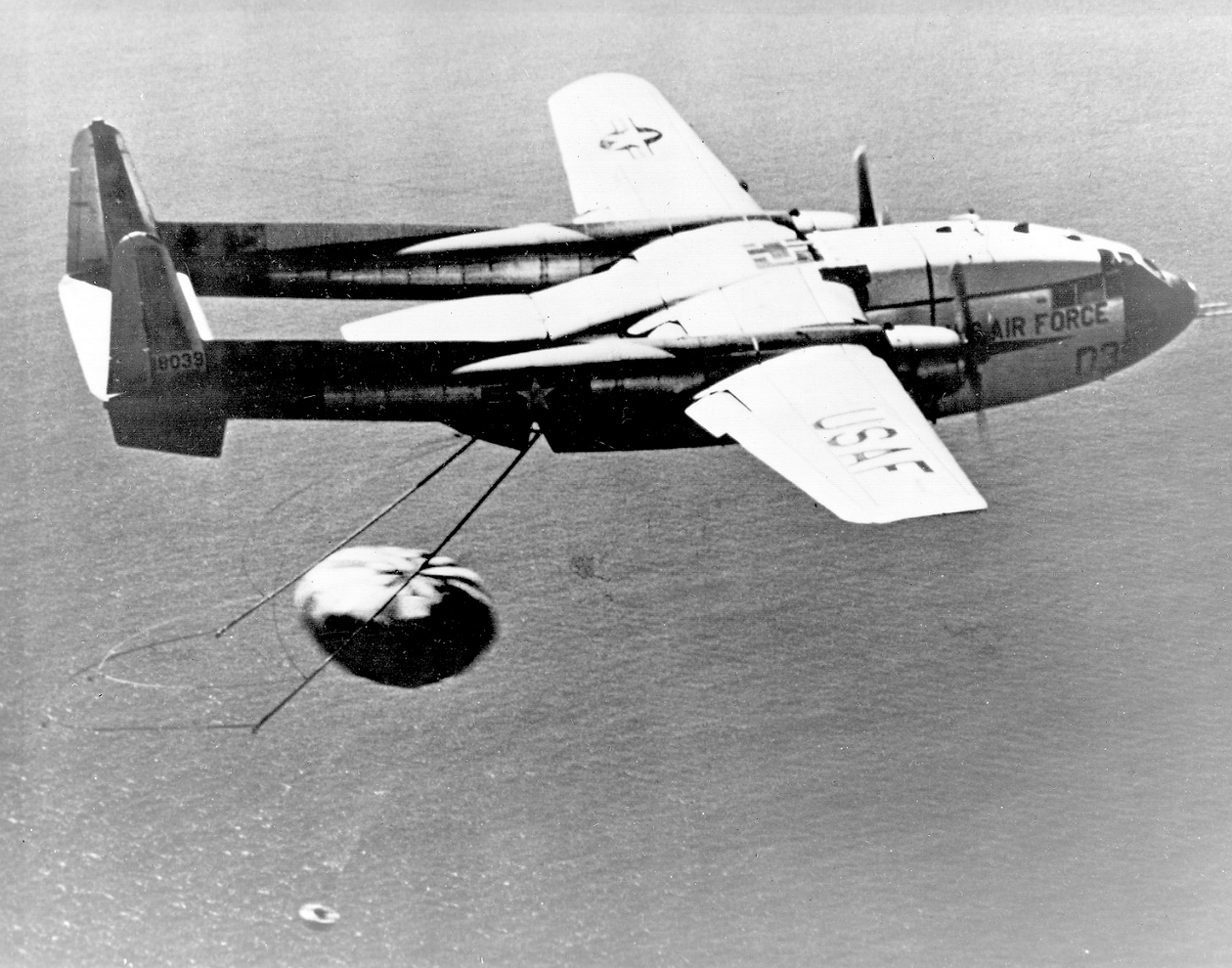 Early KH-4B Corona Film Canister captured by C-119 Transport. Source: Wiki
Early KH-4B Corona Film Canister captured by C-119 Transport. Source: Wiki
The Shortfalls:
While film provided us with new ways to process information our example from space that it came with some pretty clear limitations on how it was used, particularly in the context of military adoption. However ingenious minds would come up with innovative ways to understand how to use this to their advantage.
It was noted during the end of World War 2, as the world entered the atomic age that film had a particular sensitivity to radiation. So sensitive in fact that entire batches of film from the Kodak factory near the Manhattan Projects testing grounds needing to be destroyed due to grain like “noise” on the film from radiation and radioactive particles.
This quirk, was also noted in Europe nearly fifty years later during the Chernobyl melt down as radiation spread across Europe, with European photographers noticing the same destructive noise on their images prior to the public announcement about the meltdown occurring.While this discovery helped give rise to the cheap, disposable radiation dosimeter that would later be used en mass in both nuclear submarines and power plants, it provided a particular problem for space exploration. This is because certain areas of space have high levels of ionizing radiation, making film effectively useless the further out in space we traveled. Clearly, another solution was needed.
The Digital Sensor
If you’re a regular reader, then you’ll remember this piece where we explored the birth of the transistor, as well as touching on the concept of integrated circuits. It was this technology that gave rise to the first CMOS sensor, which provided the beginnings of our revolution as well as a substantial punch to industry giant Kodak.
Developed relatively late contextually, the CMOS sensor had it’s first widespread appearance in the 1990’s. While the first sensors lacked detail and were extremely hungry for power, Moore’s Law soon supercharged image quality while simultaneously reducing power requirements. This gave rise to a new line of still cameras and video camcorders.
If you were’t around back than, it’s hard to explain just how much Kodak was responsible for media development. They are so iconic, the phrase “Kodak Moment” entered the English language. However it’s fair to say that despite helping develop the digital camera, there was an underestimation by everybody with regards to just how significant this technological shift would become.
Part of the reason for this was that the concept of a “digital” camera in these days seemed more computer than camera, and there was a real worry at Kodak that promoting this new technology would cause significant issues for the film industry. Kodak had been a stalwart of this industry since the first film was invented. Paired with the fact that leveraging this new technology would be a significant up front investment and it’s easy to see why Kodak wasn’t easily dissuaded from disrupting the status quo.While Kodak kept their foot print in the business, by providing photo kiosks and a range of consumer hardware, the proliferation of cheap electronics into the 90’s made lasting marks on Kodak’s profit line.
2001 was the first year that films sales were outpaced rapidly by cheap, digital offerings and marked the onset of rapid adoption of this new technology.
Into The Future:
The innovation of digital sensors, really provided many different ways to consume media and use imagery.
Firstly, we saw the rapid onset of video surveillance options. While surveillance had always been around, the proliferation of cheap sensors really provided the first boost in the mainstream security market, providing commercial vendors and civilians with cheap and easy options for securing various components.
We also saw different ways of presenting media to the public. This meant that satellite television became a thing, as well as live news feeds and in the military, specialized targeting pods were used allowing for live video as well as different imaging types.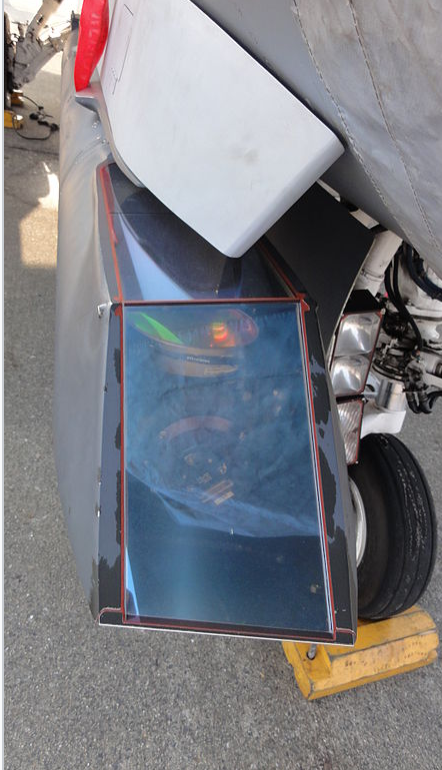 Sniper Targeting pod. Sniper sends a video feed to the ROVER. Source: Wikipedia
Sniper Targeting pod. Sniper sends a video feed to the ROVER. Source: Wikipedia
And it’s these types that we saw spread as well, with thermal, infra red and synthetic aperture vision all being sent by data link or overlaid & presented by digital imaging sensors. In the military, this technological shit was huge, laying the foundations for our connected battle space as well as real time imagery shared by satellite and targeting pod.
It’s fair to say that in some instances the next revolution for digital imaging has already begun. And you’d be right too, with new technology in artificial intelligence providing a higher quality of footage in low light conditions as well as extremely small and power efficient devices. The typical sensor you’d see on an IPhone these days eclipses the broadcast cameras of old.
While technology has evolved to give us AI enhanced or assessed imagery, we can expect new ways to share, consume and record media, along with the increased social benefits we often see with such large scale adoption.
Photography rules!
What the Tech?! is our recurring, twice monthly piece that explores the technology that was essential in shaping our modern world.
Medium has recently made some algorithm changes to improve the discoverability of articles like this one. These changes are designed to ensure that high-quality content reaches a wider audience, and your engagement plays a crucial role in making that happen.
If you found this article insightful, informative, or entertaining, we kindly encourage you to show your support. Clapping for this article not only lets the author know that their work is appreciated but also helps boost its visibility to others who might benefit from it.
🌟 Enjoyed this article? Support our work and join the community! 🌟
💙 Support me on Ko-fi: Investigator515
📢 Join our Telegram channel for exclusive updates or.
🐦 Follow us on Twitter and
🟦 We’re now on Bluesky!
🔗 Articles we think you’ll like:
- Software Defined Radio & Radio Hacking
- OSINT Unleashed: 5 Essential Tools for Cyber Investigators
✉️ Want more content like this? Sign up for email updates here



























